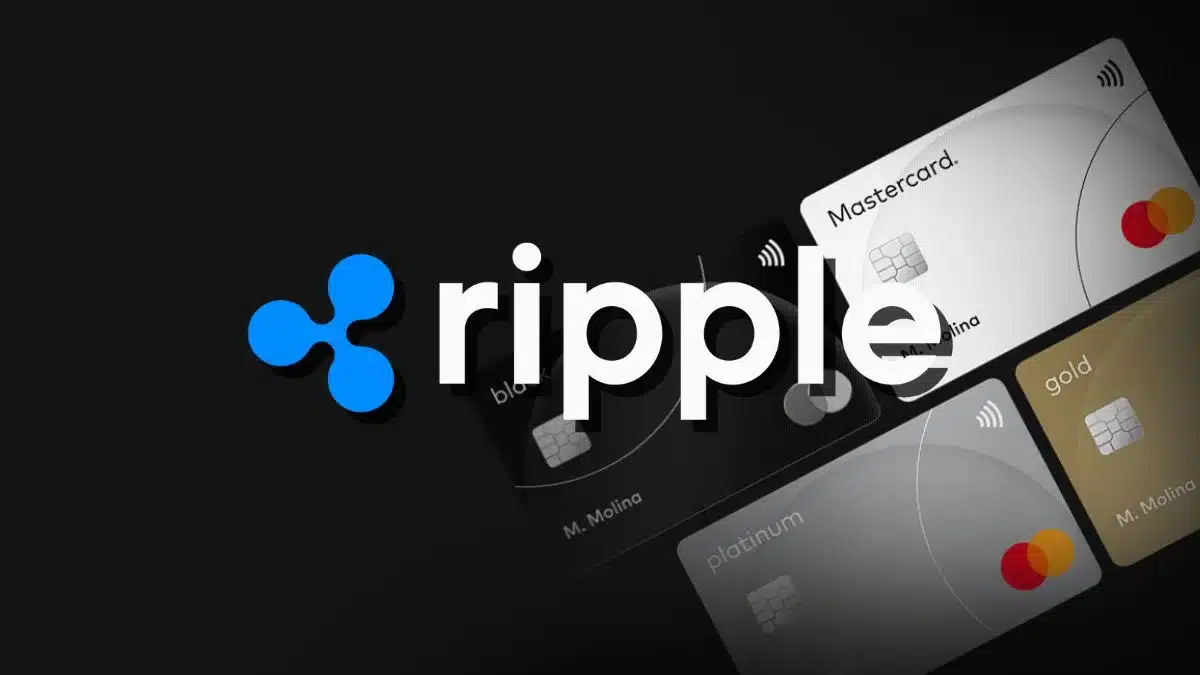- At Ripple Swell 2025, Ripple announced a partnership with Mastercard, WebBank, and Gemini to use its stablecoin $RLUSD for credit card payments.
- A Chainlink executive dismissed Ripple’s initiative as a “niche credit card gimmick.
- The rivalry highlights two approaches to onchain finance — Ripple advancing real-time settlement, while Chainlink leads in data interoperability.
At the Ripple Swell 2025 conference, Ripple unveiled a new collaboration with Mastercard, WebBank, and Gemini to integrate $RLUSD, Ripple’s native stablecoin, into fiat credit card settlements.
The initiative, starting with the Gemini XRP Credit Card, will leverage the XRP Ledger (XRPL) to enable faster, compliant, and transparent cross-border payments within traditional financial systems.
Ripple described the partnership as a milestone for institutional adoption, stating that it “sets a new benchmark for efficiency in payments and settlement within traditional finance.”
Chainlink Executive Dismisses the Move as a “Gimmick”
The announcement, however, drew a sharp rebuke from Chainlink’s marketing chief of staff, who took to social platform X to mock Ripple’s new initiative. In a pointed post, the executive wrote:
“Ripple pays Mastercard for help with a niche credit card gimmick a handful of people will use. Mastercard pays 2 billion to buy infrastructure built with Chainlink. We are not the same.”
The remark was widely interpreted as a jab at Ripple’s consumer-focused credit product, contrasting it with Chainlink’s enterprise-level integrations that underpin the infrastructure of major financial systems and tokenized asset platforms.
Also Read: Did SBI Group Really Dump Ripple (XRP) for Chainlink? Here’s What Happened
Ripple pays Mastercard for help with a niche credit card gimmick a handful of people will use.
Mastercard pays 2 billion to buy infrastructure built with Chainlink.
We are not the same. pic.twitter.com/f84wZ4V9OW
— LinkDrake (@DrakeLinked) November 5, 2025
Ripple’s Strategic Expansion Into Fiat Payments
Despite the criticism, Ripple’s partnership with Mastercard represents a continuation of its push into real-world utility for digital assets, particularly through stablecoin-backed settlement systems.
The introduction of RLUSD-based credit card payments aims to demonstrate how blockchain can streamline fiat transactions and enhance compliance for banks and institutions.
The collaboration also underscores Mastercard’s growing involvement in onchain finance following previous pilot projects with CBDCs and tokenized settlements, now extending its reach into the XRP ecosystem.
Community and Industry Reactions
The exchange sparked lively debate among crypto users, with XRP supporters praising Ripple’s expansion into mainstream finance, while Chainlink advocates highlighted their project’s deeper institutional integrations.
Some industry analysts suggested that the rivalry reflects two distinct strategies: Ripple focusing on settlement efficiency, and Chainlink on interoperability and data infrastructure.
Others noted that both companies play complementary roles in the emerging onchain economy — Ripple advancing real-time settlement technology, and Chainlink powering the data and cross-chain infrastructure underpinning it.
Competing Visions for Onchain Finance
The confrontation from the Chainlink executive encapsulates the competitive but converging evolution of blockchain infrastructure for institutional finance.
While Ripple’s partnership with Mastercard signals a growing foothold in payment settlement and stablecoin utility, Chainlink continues to dominate in data connectivity and cross-chain interoperability. Both projects appear to be building toward the same goal, a seamless, blockchain-integrated global financial system, albeit from very different directions.
Also Read: Massive XRP Alert: Evernorth Makes Another $214M XRP Purchase – Here’s How Much it Now Holds

